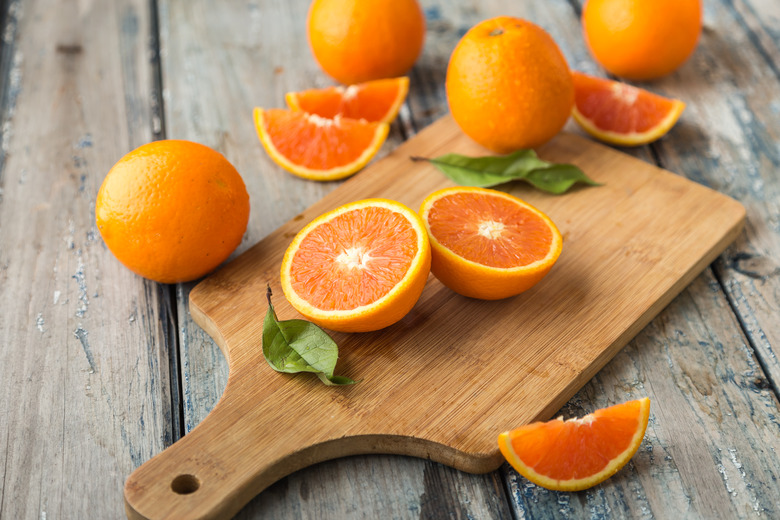What Is The Difference Between Florida & California Oranges?
California and Florida are big orange growers, and both grow the same cultivars of orange. Still, their oranges are not the same, because Florida's hot, wet climate, and California's milder, dry climate interact differently with the same cultivars.
Varieties
Varieties
There are four major commercial cultivars of orange: the Washington navel, the Valencia, the Hamlin and the pineapple orange. All are grown in both states, but the navel and Valencia predominate in California, while the Hamlin, pineapple and Valencia are widely grown in Florida.
Juice
Juice
Valencia oranges in California have thick peels and a very sweet flavor. Valencia oranges in Florida have thinner peels and more – albeit more tart – juice. The dry weather in California supports the growth of the thick-peel, sweet "table" oranges; while the damp heat of Florida promotes a juicier orange.
Production Differences
Production Differences
In July 2010, Florida sent about 133 million oranges to market. In the same period, California produced about 58 million. The difference is based on the massive juice industry in Florida. One orange only produces around three ounces of juice. The production ratio of Valencia to non-Valencia in Florida in July 2010 was 686/650. The ratio of Valencia to non-Valencia in California in July 2010 was 42/16. California's biggest seller is the navel.
Hamlins and Pineapple
Hamlins and Pineapple
Hamlin oranges, are a small, think-skinned, sweet variety for juice or table, predominantly grown in Florida. The color of the juice is considered "off" by processors, so Hamlin juice is mixed with other juices to achieve a commercially pleasing color. Late season juice oranges in Florida are generally the pineapple variety. The juice is sweet, but the orange is seedy, so it is not a good commercial table orange.
Seedless
Seedless
The seedless Washington navel orange is the most popular table orange in the United States. It is predominantly grown in California, and grafted to achieve seedlessness. It is a fleshy, sweet orange with a thick, easy-to-peel skin.
Cite This Article
MLA
Goff, Stanley. "What Is The Difference Between Florida & California Oranges?" sciencing.com, https://www.sciencing.com/difference-between-florida-california-oranges-7517478/. 22 November 2019.
APA
Goff, Stanley. (2019, November 22). What Is The Difference Between Florida & California Oranges?. sciencing.com. Retrieved from https://www.sciencing.com/difference-between-florida-california-oranges-7517478/
Chicago
Goff, Stanley. What Is The Difference Between Florida & California Oranges? last modified March 24, 2022. https://www.sciencing.com/difference-between-florida-california-oranges-7517478/
